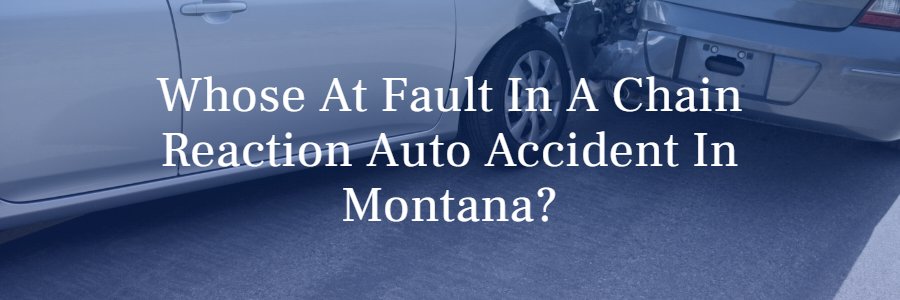Posted in News on January 13, 2022
Vehicle accidents often result in severe injuries and extensive property damage in Montana. This is particularly true for chain-reaction collisions that involve multiple vehicles. In order to recover compensation for injuries and property damage, it is crucial to determine the fault of the other parties involved. This is more challenging when it comes to chain-reaction crashes. Determining fault after a chain-reaction collision involves gathering various types of evidence to establish exactly what happened.
Some Possible Chain-reaction Collision Scenarios
Readers will understand what a chain-reaction collision is, but the reality is that there are many different scenarios in which these incidents can occur. A chain-reaction collision usually starts with an initial collision between two vehicles. This initial collision can create enough force or enough of a hazard that it affects other vehicles around area.
Some of the most common chain-reaction collision scenarios in Montana include:
- A driver hydroplaning on water or sliding on black ice. This can lead to the vehicle having to stop on the roadway, colliding with other vehicles, or colliding with a median. Unfortunately, this could lead to a rear-end collision and set off a chain-reaction collision with the vehicles traveling in the same direction behind them.
- Two vehicles could be stopped at a stop sign or a stoplight and be impacted by a third driver from the rear. This rear impact could lead to the second vehicle slamming into the first, and from there, any number of dangerous conditions could arise. There could be a continued pile up behind the vehicles, or the initial collision could force the first vehicle into oncoming traffic.
Who is Responsible for Chain Reaction Accidents?
Liability for a chain-reaction collision can be difficult to determine. Often, there are multiple different collisions that must be investigated that occur all at around the same time. There may be one party ultimately held liable for the entire incident, but it could also be possible for there to be two, three, or more parties responsible for the entire chain-reaction collision.
It will be crucial to examine all evidence related to the collision and try to piece together the chain of events that led to the overall collision. The driver who initially caused the chain-reaction will most certainly hold liability, but that does not absolve others of liability in this situation as well. Some of the evidence that can help prove liability includes:
- Statements from eyewitnesses to the collision
- Statements from other drivers and passengers
- Police or accident reports
- Videos taken right after the incident occurs
- Surveillance footage from nearby cameras
- Vehicle “black box” recording data
- Mobile device data
Is Montana a Comparative Negligence State?
Montana follows a “modified comparative negligence” theory. This means that individuals can recover compensation if they are less than 50% responsible for causing their own injuries. If an individual’s fault for the situation exceeds 50%, they will not be able to recover compensation for their losses.
However, any person who shares fault below 50% will receive reduced compensation based on their overall percentage of fault. This comparative negligence theory could certainly play a role in a chain-reaction collision. Individuals who were partially responsible may be able to receive some relief through compensation, but this may not cover all of their expenses.



